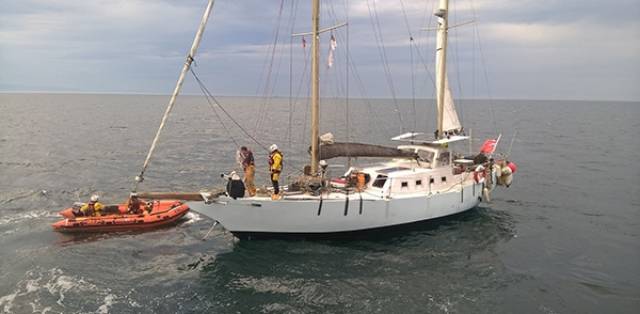Larne RNLI came to the aid of four people yesterday evening after their 16m yacht got into difficulty off the County Antrim coast.
At approximately 6.30pm yesterday (Thursday 7 July), the volunteer crew was requested by Belfast Coastguard to launch both their all-weather and inshore lifeboats after it was reported that a large yacht had sustained engine failure a mile north east of Muck Island.
Weather conditions at the time were described as good with a Force 3 wind and a slight swell running.
Arriving on scene, the lifeboat crew observed that one of the four people onboard was suffering from sea sickness.
Crew members from the inshore lifeboat went aboard to provide casualty care to the seasick individual while the all-weather lifeboat crew started to prepare the yacht for towing.
Once a towline was established, the all-weather lifeboat began the passage to Carrick Marina. Due to the large size of the vessel, Larne RNLI’s inshore lifeboat was used to assist with manoeuvring the yacht in the confines of the marina.
Speaking following the call out, Philip Ford-Hutchinson, Larne RNLI Deputy Launching Authority said: ‘This call out was a great example of both our inshore and all-weather lifeboats working well together to assist the four people onboard the casualty vessel. The inshore lifeboat crew members were able to administer casualty care to the person who was seasick before assisting the all-weather crew with setting up a tow and then helping to manoeuvre the yacht in the tight confines of Carrick Marina. Our volunteer crew regularly train for scenarios like this and those skills and training were put to good use last night.’






























































